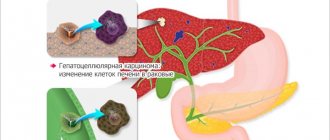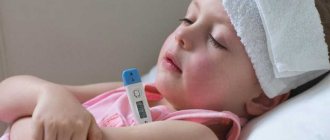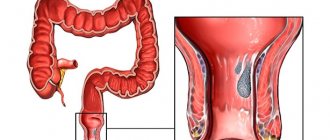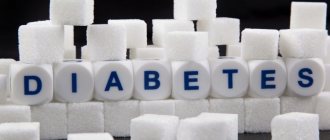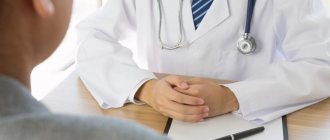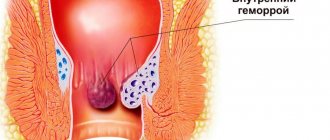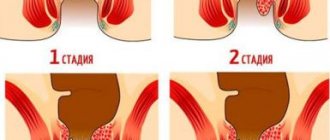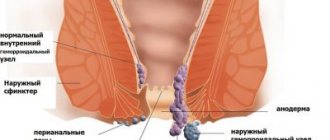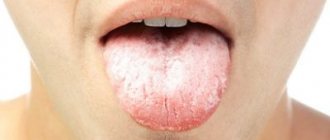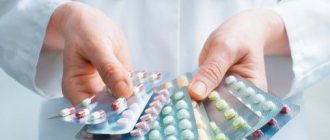Causes of hemorrhoids in teenagers
The expansion of the veins of the rectum is caused by the weakness of the vascular walls and a number of other factors. However, hemorrhoids can appear at different ages, including adolescence. Children whose parents also suffer from hemorrhoids are especially susceptible to developing this disease.
Hemorrhoids in adolescents also develop with frequent constipation, a sedentary, sedentary lifestyle, or in cases of severe overstrain of the rectal veins. Various vascular abnormalities can also be the main cause of hemorrhoids. With hemorrhoids, the first signs of the disease may appear in early childhood, after which the disease develops further into adolescence. Swollen bumps around the anus are the first sign of hemorrhoids.
If a teenager plays sports, then excessive sports activities can also trigger the disease. It is necessary to monitor the correct physical activity on a young body. In the prevention and treatment of the disease, sport is the main measure; however, overstrain of the veins of the rectum and lower extremities should be avoided. Enlarged veins in the legs will easily cause the development of hemorrhoids.
Teenage hemorrhoids may be a consequence of existing dysbiosis in the child’s gastrointestinal tract. Any stool disorders, constant constipation and diarrhea worsen the basic functions of the gastrointestinal tract. Often, intestinal and stomach disorders are the main cause of hemorrhoids in adolescents.
Genetic inheritance is the cause of many rectal defects. Weak vessel walls impede normal blood flow, resulting in disruption of normal blood circulation in the intestines. In such a situation, the hemorrhoids become overcrowded and inflamed.
Symptoms
The teenager will need to explain the important need to visit a qualified doctor and help overcome shyness and withdrawal before the appointment. Self-medication in the fight against hemorrhoids is prohibited.
The disease can be suspected by the following symptoms:
- discomfort in the anus;
- pain in the anal area;
- discomfort in the rectum when walking, physical activity, lifting heavy objects;
- bleeding during bowel movements.
Hemorrhoids in adolescence can manifest not only with severe pain in the anal area, but also with bleeding of varying degrees. You can only observe minor bleeding on linen and toilet paper, but sometimes the bleeding can be profuse.
Having identified the symptoms of the disease, you should not self-medicate. It may be incorrect and cause harm, which will lead to various complications. The sooner the disease is detected in a child, the sooner the fight against the disease will begin. At the first manifestation of symptoms of hemorrhoids, a teenager should be taken to a doctor.
Sources
- https://stopvarikoz.net/gemorroy/lechenie/tradicionnoe/gemorroj-u-podrostkov.html
- https://gemorroy.info/baby/u-podrostkov
- https://gemoranet.ru/gemorroj-v-16-let.html
- https://jeludokbolit.ru/gemorroj/gemorroj-u-podrostkov.html
- https://stopgemor.ru/gemorroj-u-podrostkov/
[collapse]
Stages and symptoms
Swollen formations around the anus are the first sign of hemorrhoids in children. Hemorrhoids in adolescents aged 14-18 years have symptoms, as in people of the middle and older age groups, but most often it is a mild form of the disease. Childhood and teenage hemorrhoids are divided into three stages:
Teenagers and children can ignore the symptoms of hemorrhoids for a long period of time and conceal from their parents the fact that something is bothering them, therefore parents should be vigilant towards their children. It is important for a young boy or girl to understand that there is nothing shameful in this; it is necessary to convey to the child that everything can be fixed if you do not delay going to the doctor.
Hidden form of hemorrhoids
There is a latent form of hemorrhoids, which is asymptomatic. Then the presence of nodes is recorded, but there are no symptoms of the disease. Over time, vascular formations or cavernous tissue, which lies under the rectal mucosa, rupture. If sudden bleeding occurs, you should immediately visit a specialist. This symptom may also indicate rectal cancer.
Having recognized the symptoms, you should immediately consult a doctor and not try to self-medicate. A specialist proctologist will conduct an examination, make the correct diagnosis and prescribe the necessary treatment, which depends on the stage of the disease. Similar signs can be harbingers of other diseases, for example, tumors.
Treatment methods
Drugs for treating the disease in adolescents are different, but the essence remains the same. Hemorrhoids at the age of 16 must be treated using complex methods.
For this purpose, medications are used for local and systemic effects, physiotherapeutic procedures are carried out, therapeutic exercises are prescribed and nutrition is adjusted.
If there is an urgent need, doctors may prescribe surgical treatment. To speed up recovery, traditional medicine recipes can be added to drug treatment, aimed at eliminating hemorrhoids and its symptoms.
Medicines
Conservative treatment options include systemic and local medications. The first group includes:
- Non-hormonal agents that can eliminate the inflammatory process. They are used to relieve pain and inflammation in the anal area. For teenagers, it is recommended to use Ibuprofen, Voltaren, Nimid.
- Phlebotonics and angioprotectors that can improve the condition and strengthen the walls of the veins, they also increase tone and relieve inflammatory processes. Among the effective and popular remedies are vetononics called Troxevasin, Venitan, Detralex.
- Laxatives are prescribed to normalize stool and eliminate constipation. The most commonly used are Duphalac or Picolax.
- If there is bleeding, medications are used to stop the bleeding from the nodes. Vikasol and Dicinone are used for treatment.
Medicines are often used for topical use. These include suppositories, ointments and gels.
Such drugs perfectly relieve the symptoms of hemorrhoids, relieve inflammation, can help relieve constipation and stop bleeding.
Hemorrhoids at 16 years old can be treated with the following means:
- Candles – Relief, Natalsid, Proctosedyl.
- Ointments and gels – Troxevasin, Relief, Posterizan.
In addition to the drugs described, it is recommended to use folk remedies.
Folk recipes
In adolescence, it is best to use baths for hemorrhoids. For this, warm and cold types are used.
They are made from medicinal herbs. To regenerate tissue and eliminate symptoms, you can use decoctions:
- Oak bark.
- Yarrow.
- Mullein.
- Onion peels.
- Calendula.
- Daisies.
Regular cold gives good results. For this, compresses are made, cold herbal infusions for microenemas, and ice suppositories are used.
The products easily cope with pain, itching and burning in the anus. After use, the size of hemorrhoids is reduced.
To improve stool during constipation, you should take 1-2 tablespoons orally every day. olive or flaxseed oil.
Use it on an empty stomach, before breakfast. This recipe has a positive effect on the entire body.
There are many traditional medicine remedies for treating hemorrhoids and eliminating their symptoms. All of them should be used only on the recommendation of a doctor.
Surgical treatment
As a rule, hemorrhoids in adolescents are mild and are not accompanied by complications, so conservative therapy often helps.
Other diseases are rarely diagnosed, so surgery is almost never performed. Surgery is used only in emergency cases, as well as for congenital pathologies.
In modern medicine, they try to use minimally invasive treatment methods:
- Sclerotherapy.
- Ligation of hemorrhoids using latex rings.
- Photocoagulation.
Minimally invasive methods differ from standard surgery in quick recovery times, and complications are eliminated.
Therapy
The effectiveness of the treatment largely depends on the stage at which the disease is detected. The earlier the therapy is started, the higher the likelihood of complete recovery. Therapy includes taking medications and minimally invasive methods. At an early stage, you can use folk recipes, diet, and lifestyle modification.
Medication course
The main method of treating the disease in adolescents is the use of medications. Drug therapy includes the following groups of drugs:
- Venotonics. Drugs in this group increase the tone of the veins and strengthen the vascular wall. Venotonics directly affect the mechanism of disease development. This group includes Detralex and Normoven tablets.
- Local painkillers. Painkillers contain local anesthetics. They reduce pain sensitivity by blocking nerve endings. Drugs from this group include Emla cream and Procto-Glivenol ointment.
- Anti-inflammatory suppositories. Rectal suppositories with anti-inflammatory effects eliminate swelling, redness of the skin, and reduce pain. For hemorrhoids, Diclofenac suppositories are used.
- Drugs that promote regeneration. Used in the presence of anal fissures, wounds and ulcers. This group includes “Sea buckthorn suppositories” and “Methyluracil” ointment.
Folk remedies
At the first stage, hemorrhoids can be treated using traditional medicine. Prescriptions are used as additional treatment.
Folk remedies can be used internally and externally. Decoctions or infusions of medicinal herbs are often used internally. Local treatment of hemorrhoids involves the use of compresses, baths and ointments. The most popular recipes include the following:
- Decoction of nettle leaves. For cooking you will need 2 tbsp. l. dry nettle leaves and 200 ml of water. Boil water with leaves for 15 minutes. After cooling, the broth is ready. Drink 50 ml of decoction 30 minutes before meals.
- Sage bath. To prepare the bath, use 3 tbsp. l. dried sage flowers. The water should be at a warm temperature.
- Lotions from the herb celandine. For the lotion you will need an infusion of celandine leaves. You need to soak a thick piece of cloth in the infusion and apply it to the anal area. The lotion is fixed for 2–3 hours.
An important element of disease treatment is diet. Nutrition for hemorrhoids is based on the following principles:
- Drink plenty of fluids. A teenager should drink at least 1.5 liters of water per day. This improves the general condition of the body, eliminates constipation, and improves digestion.
- Fractional meals. Food should be consumed in small portions, 5 times a day. The diet should include 3 main meals and several snacks.
- Exclusion of fatty and spicy foods.
- Heat treatment of products. It is allowed to boil, bake, stew, and steam food. This helps improve digestion.
- Elimination of products that increase gas formation.
Symptoms of hemorrhoids in teenagers
The signs of hemorrhoidal inflammation in children are not much different from the manifestations of this insidious disease in adults. Most teenagers at a meeting with a doctor behave very constrained and react extremely negatively to the need to examine the anal area by a proctologist. To correctly make a diagnosis, you need to take into account all the characteristic complaints characteristic of acute or chronic inflammation of hemorrhoidal vessels, as well as carefully examine the venous nodes and the color of the damaged mucosa.
A delicate disease in most cases is accompanied by an inflammatory process of the rectal mucosa, anal bleeding of varying degrees
Treatment methods for hemorrhoids in adolescent children are the same as treatment methods for adults. It is worth considering the presence of hemorrhoids if the following symptoms appear:
- spotting that leaves a slight imprint on toilet paper;
- unpleasant sensations in the anus, reminiscent of the presence of a foreign body in the lumen of the rectum;
- discomfort associated with prolonged sitting;
- a feeling of heaviness and aching pain in the anus that occurs during physical activity;
- itching, burning, redness of the anal area, swelling of soft tissues.
In the later stages of the disease, hard venous lumps form, which tend to fall out during bowel movements. In turn, the act of bowel movement with hemorrhoids becomes prolonged and painful, which is fraught with the development of complications. In such cases, patients may not mention blood or blood at all, but highlight chronic constipation as the main complaint. A digital examination of the rectum will help differentiate between hemorrhoids and digestive diseases in such a patient.
Characteristic symptoms
Hemorrhoids are a progressive disease that has 4 stages of development, each of which is characterized by certain symptoms. The initial phase, when the disease is just developing, may be asymptomatic or with minor, unclear manifestations. It lasts from several days to several months. The above complaints gradually arise - a sensation of a foreign body in the anus, itching or burning, caused by the release of inflammatory exudate.
If therapy is not started, the disease will develop. Join:
- pain during bowel movements (over time it can become constant);
- bleeding of varying intensity from the rectum;
- anemia.
What does modern medicine offer?
Hemorrhoids in children, young people and adolescents over 14 years of age are treated using the same methods and medications as in adults using an individually calculated regimen and dosage of drugs.
Some age features
Hemorrhoids at the age of 15, as a rule, do not reach a severe stage of development and can be successfully treated.
Good elasticity of blood vessels and the body's defenses make it possible to get rid of nodes at the age of 16 in a fairly short time.
The disease at 17 years of age can be cured in a short time with timely treatment and the absence of concomitant diseases.
Hemorrhoids at the age of 18 require timely diagnosis and treatment, as complications are possible.
A complex approach
Treatment of hemorrhoids in adolescents involves the following set of measures:
- Diet. It is necessary to exclude from a teenager’s diet hot, spicy, fried, smoked foods that disrupt local blood flow and dilate blood vessels. Excessive intake of salt and liquids should be avoided. To avoid constipation, which is one of the main factors in the occurrence of hemorrhoids, the body needs fiber and coarse fibers, which are found in black bread, raw vegetables and fruits, prunes, oatmeal, buckwheat and barley. The child's meals should be fractional (small portions, but often).
- Life style. A teenager should give up prolonged sitting at the computer or watching TV, be more active, and avoid excessive physical activity. In some cases, they resort to therapeutic exercises, which improve blood circulation.
- Intimate hygiene. After each bowel movement, you need to wash yourself with cool water and soap.
- Oral medications for the treatment of adolescents are used quite rarely and help improve blood circulation, strengthen the walls of blood vessels, they also reduce inflammation and pain. Used under strict medical supervision.
- Suppositories, ointments and creams for hemorrhoids. Such products stop bleeding, restore damaged surfaces, and help eliminate inflammation, swelling, and itching. The drugs are used as prescribed by a doctor according to the attached instructions. In some cases, microenemas based on sea buckthorn oil and rosehip oil or homemade candles made from honey or aloe leaves are useful.
- Baths. The use of warm sitz baths has a good therapeutic result for hemorrhoids. A decoction based on oak bark, chamomile, calendula, onion peels, strawberry leaves, and hazel is added to the water for the procedures. Medicinal herbs help normalize blood flow, heal anal fissures, resolve hemorrhoids, eliminate inflammatory processes, reduce pain and burning.
- Cold. With the help of cold lotions, compresses applied to the anus, as well as ice suppositories inserted into the anus for half a minute, you can relieve severe pain and reduce inflammation.
- Surgical intervention. Getting rid of hemorrhoids in adolescents occurs in isolated cases, since in this age category the disease, as a rule, is not very severe and can be treated using other methods.
Diet
It is strongly recommended to exclude spicy, fried, smoked and spicy foods from your daily diet. Such products dilate blood vessels and disrupt blood flow. It is important to reduce fluid and salt intake. But fiber and coarse fibers - vegetables, fruits, black bread, hard cheeses, cereals - are worth adding, as they help avoid constipation, and this is one of the main provocateurs of this disease. For better absorption and easier digestion, it is recommended to take food more often and in moderate portions. To normalize stool, it is recommended to drink 10-15 ml of olive oil every morning on an empty stomach.
Types of knots
- Medicines
In both adults and adolescents, hemorrhoids come in the following types:
- internal hemorrhoids are located directly in the rectum;
- external nodes - localization of hemorrhoids not in the rectum, but around the anus;
- combined hemorrhoids – combines the symptoms of the two types listed above.
Diagnosis of the disease in young girls
When the first symptoms of the disease appear, going to the doctor is a reasonable decision. A girl should be prepared for diagnosis and know how the process occurs. You need to come prepared for a medical examination. Be sure to have a bowel movement before the examination so that the rectum is empty. It is also advisable that at least 8 hours pass between the last meal and examination by a doctor.
How is the inspection carried out? The doctor may use a special device called an anoscope. But most often a digital examination is performed. Thus, the doctor can check the condition of hemorrhoids and determine the method of treatment.
Where is the examination carried out? It can be performed on a special gynecological chair or on a couch. The girl is sometimes asked to take a knee-elbow position. In this case, you need to try to be relaxed so that the proctologist does not damage the painful nodes.
Why do hemorrhoids develop at 18 years of age or earlier?
The main reason for the development of hemorrhoids not only at 20 years old, but at any age is the weakening of the walls of blood vessels. Blood circulation is disrupted, the blood stagnates, thickens - a hemorrhoid is formed, which can become inflamed and fall out. It was noted that in children suffering from this pathology, it was also observed in their parents.
It is safe to say that the development of hemorrhoids before the age of 20 is largely due to hereditary predisposition. There are people who are born with weak vascular walls; if this factor is combined with poor nutrition, an inactive lifestyle, excess weight, or vice versa, heavy physical activity, the risk of developing hemorrhoids increases significantly.
The second reason, also very common, why hemorrhoids may appear in adolescents under 20 years of age is a tendency to constipation. Problems with bowel movements, again, arise due to an unbalanced diet and insufficient activity in children. When you have to push during a bowel movement, the veins become overstrained, the blood flow to them increases and their walls stretch.
Often parents themselves are the culprits of hemorrhoids in children and adolescents under 20 years of age. If a child has been taught to sit on a potty for a long time while waiting for a bowel movement, this also weakens the blood vessels and muscles of the rectum. At an older age, this can lead to hemorrhoids.
Another reason why hemorrhoids may be detected is congenital anomalies of the veins and blood circulation. Treatment in this case is most often surgical; surgery is necessary to eliminate the defect.
Intense exercise in the gym, especially associated with lifting heavy dumbbells, barbells, and exercises on weight machines, also leads to hemorrhoids in teenage boys under 20 years of age. A tendency to varicose veins in the legs can also be a prerequisite for hemorrhoids at a young age.
The treatment is carried out more preventatively - it is necessary to strictly monitor the child’s physical activity and prevent overstrain of the pelvic muscles.
If hemorrhoids are detected in adolescents, it is imperative to get tested for intestinal dysbiosis. This pathology leads to various disorders of the digestive tract. Chronic diarrhea alternating with constipation can also lead to the formation of hemorrhoids and anal fissures.
Treatment of hemorrhoids in teenagers under 20 years of age is often complicated by the fact that children are embarrassed to tell their parents about their problem
Therefore, it is important from birth to monitor the functioning of the child’s intestines, his stool, control nutrition and physical activity.
And if he has weak blood vessels from birth and poor circulation, eliminate this problem first.
Why are teenagers at risk?
During adolescence, the range of interests, diet, and physical activity changes. A teenager spends a lot of time at the computer and in front of the TV, and studying takes up most of the day. Physical inactivity gradually develops due to a sedentary lifestyle. This factor immediately places the teenager at risk. Insufficient physical activity leads to the formation of hemorrhoids at the age of 16 - already at this age the disease can have a detailed clinical picture. This is due to constipation, which develops against the background of prolonged sitting and is both the main etiological and pathogenetic factor.
In addition to these reasons, pathology can be caused by:
- poor nutrition;
- regular physical overexertion;
- dysbacteriosis;
- diseases of the digestive system;
- neoplasms (rectal polyp);
- acute infections accompanied by constipation;
- stress - affects indirectly, through the nervous system.
In rare cases, a congenital anomaly of venous collaterals and muscles of the rectal area occurs.
A new cause of hemorrhoids at the age of 18 (but this is also possible at an earlier age, starting from 14-15 years old) is masturbation. The process is accompanied by the same changes in the pelvis as with other causes of the disease. Smoking and alcohol, which minors may try, dilate the pelvic vessels and cause pathological venous nodes. Tobacco makes blood vessels fragile and reduces their elasticity.
Prevention
Prevention should be carried out from an early age to prevent the development of the disease in adolescents.
To do this, parents should monitor their child and use the following tips:
- Start feeding your baby in a timely and correct manner, excluding milk and adding regular foods.
- The diet is created balanced, with a varied menu and a high fiber content in dishes.
- It is necessary to limit the consumption of spices, fatty and fried foods. It is better to steam, boil or bake food in the oven.
- Do not often cook rice or baked goods for teenagers, limit the consumption of sweets and tea.
- If you want to eat sweets, you should use honey and dried fruits, which are related to the prevention of constipation.
- Make sure you drink enough water per day.
- Be sure to teach your child to be physically active.
Can teenagers have hemorrhoids?
Hemorrhoids in adolescents are dilation of the veins of the anus, in which there is an enlargement and inflammation of the hemorrhoids. Due to shyness, young patients rarely go to the doctor, which leads to the progression of the disease to an advanced form. However, only in the early stages can the disease be cured with conservative methods.
Hemorrhoids in adolescents are dilation of the veins of the anus, in which there is an enlargement and inflammation of the hemorrhoids.
The following factors lead to dilation of the veins of the rectum:
- Genetic predisposition. Anomalies in the structure of vascular walls and valves are inherited, due to which hemorrhoids develop in patients of any age. The risk of an unpleasant disease in a child increases if his parents had a similar problem.
- Poor nutrition. Teenagers rarely eat healthy food, preferring fast food. Consumption of large amounts of fatty, spicy and fried foods contributes to constipation and inflammation of the intestinal walls, creating conditions for the development of hemorrhoids.
- Sedentary lifestyle. Children and teenagers prefer to spend a lot of time on the computer and watching TV shows. Prolonged sitting leads to impaired blood flow, causing blood to stagnate in the veins of the small pelvis. When the blood vessels become overfilled, they stretch and hemorrhoids appear.
- Excessive physical activity. Hemorrhoids occur if a teenager is involved in certain sports and work activities.
- Disturbance of intestinal microflora. Dysbacteriosis is considered the main cause of stool disorders. Both constipation and diarrhea lead to injury to the intestinal vessels, which causes unpleasant symptoms of hemorrhoids.
- Alcohol consumption. Many people over 14 years of age consume alcoholic beverages at least occasionally, which has an extremely negative effect on a fragile body. The flow of blood to the lower half of the body provokes stretching of the walls of the hemorrhoidal veins.
- Smoking tobacco. It negatively affects the condition of the entire body, including blood vessels.
The clinical picture of the disease is determined by its type - external (external) or internal. With external hemorrhoids, the following symptoms appear:
- The presence of seals in the anal area. Hemorrhoidal cones are small in size and soft in consistency. They are discovered when performing hygiene procedures and undergoing examination. During defecation and physical activity, the nodes increase in size, but at rest they return to their previous size.
- Constant anal itching. Associated with permanent injury to external nodes.
- The appearance of bloody traces on the surface of stool and toilet paper.
- Acute pain in the anus, aggravated by sitting, walking, defecation and exercise. Characteristic of advanced forms of hemorrhoids, accompanied by thrombosis of hemorrhoids. In this case, the bumps acquire a hard consistency, the surrounding tissues swell and turn blue.
https://youtube.com/watch?v=3XlN3JmuJ9I%3Fenablejsapi%3D1https%3A
The clinical picture of internal hemorrhoids includes:
- The presence of compactions under the intestinal mucosa. They can be detected by performing a rectal digital examination. When touching the internal nodes, no pain occurs.
- Rectal bleeding. Internal hemorrhoids accompany every act of bowel movement. Blood flows out in drops or streams. This contributes to the development of anemia, in which the teenager complains of increased fatigue, weakness, dizziness, and loss of appetite.
- Pain in the rectum that occurs when passing hard stool.
- Feeling of heaviness in the lower abdomen, sensation of a foreign body in the anus. Occurs with a pronounced increase in nodes.
- Itching in the anal area. Incomplete closure of the sphincter contributes to the leakage of intestinal contents, irritating the skin.
Rectal bleeding with internal hemorrhoids accompanies every act of defecation.
Treatment
We found out whether teenagers can have hemorrhoids. How to treat hemorrhoids in a teenager? It is not recommended to get rid of varicose veins in the anal area on your own. Identifying an accurate diagnosis will facilitate more effective treatment. The recommendations of a proctologist will help you get rid of the disease much faster.
Most often, treatment is carried out through an integrated approach, that is, it may include medications, minimally invasive procedures and traditional medicine methods. Surgical intervention does not take place in adolescence, since the disease in this case is characterized by a mild course.
Medicines can be presented in the form of suppositories for rectal use, tablets, ointments, gels, and creams for topical use. Minimally invasive procedures are considered:
Typically, a proctologist prescribes various effective medications for topical use in the form of ointments, creams, and rectal suppositories.
- coagulation using infrared ray;
- cryotherapy (exposure to cold on the affected surface);
- massage;
- ligation with latex rings.
These methods are not used very often and require serious indications. Their appointment should be carried out only by a specialist, in this case a proctologist. The reason for this is the presence of contraindications:
- The disease, which arose at the age of 14, is treated by mandatory compliance with all the doctor’s instructions regarding preventive measures and the use of prescribed medications. Getting rid of pathology at the age of 15 has significant differences.
- The disease at 16–17 years of age may be aggravated by more progressive development and the presence of bad habits, but due to such positive aspects as more elastic blood vessels and a strong immune system (compared to the immune system in adults), treatment usually proceeds without problems.
If you contact a specialist in a timely manner and use a competent treatment method, there is a possibility that it will not return, provided that you continue to maintain a healthy lifestyle.
The resorption of hemorrhoids is well facilitated by the use of various rectal suppositories
Let's take a closer look at the use of medications:
Rectal suppositories are used for internal hemorrhoids. Thanks to their use, the inflammatory process, burning, itching is relieved, bleeding disappears, and hemorrhoids are reduced. Suppositories are used only in the dosage prescribed by the doctor, despite the fact that the side effects from them are much less common than from medications.
It is advisable to insert them before bedtime, since when dissolved, the active substance may be released back. The greatest benefit comes from suppositories from the group of homeopathic medications, since they are created only from natural ingredients and practically do not cause side effects. These include rectal suppositories “Relief” and “”.
It is also possible to make your own suppositories for rectal use. They can be made from decoctions and infusions of medicinal herbs, candied honey, potatoes, beets, onions, or compositions consisting of many ingredients:
- ointments, gels or creams. They can be used for both external and internal types of hemorrhoids. Each drug has its own indications for use and side effects. Heparin and Vishnevsky ointment are widely used. The first of them cannot be used in the presence of bleeding wounds and for treating the mucous surface of the rectum, the second is usually prescribed for the treatment of late stages of the disease;
Treatment methods for hemorrhoids in adolescents
At an appointment with a doctor
How to treat formed hemorrhoids in a teenager? Hemorrhoidal disease in adolescence is treated in several ways. For treatment, proctologists prescribe a set of therapeutic exercises, drug therapy, and in severe stages, surgery to remove cones.
Most often, boys and girls are treated with conservative methods. Hemorrhoids in a teenager can be treated to relieve symptoms and inflammation using ointment, tablet, and injection medications that eliminate clinical signs. Very often, proctologists prescribe Relief suppositories or other suppositories containing sea buckthorn oil. Such drugs quickly eliminate the symptoms and alleviate the patient’s condition.
Antihemorrhoidal compresses with Vishnevsky ointment or other compositions with heparin are effective. Heparin helps to quickly eliminate inflammatory processes, vascular constriction, and normalize blood flow. Venous tone is restored with venotonics (Detralex, Venarus), Tranexam and aminocaproic acid are prescribed to prevent blood loss. Additionally, microenemas and laxatives are recommended.
Treatment of hemorrhoids with surgery in adolescents is rarely used. This is permissible only in the most severe cases or when conservative therapy is unsuccessful. Among operations, adolescents often resort to ligation of cones. After pinching the node with a ring, the power stops and the node dies.
Causes of childhood hemorrhoids
The disease is equally common in men and women, and can develop in children of different ages.
- Constipation. He is the main provocateur. In young children, problems with bowel movements appear due to an unformed gastrointestinal tract. Every new product causes intestinal irritation. Diarrhea or constipation occurs. In both the first and second cases, hemorrhoids can develop.
- Nutrition. Plays a very important role in improving the child’s digestive system and strengthening the immune system. At the age of 5 years, children still obediently eat porridge, cottage cheese, and all the dishes that their mother offers them. Teenagers begin to develop their own food preferences, and they are not always healthy for the body. Fast foods, processed foods, pizza, chips, hot dogs, crackers, and carbonated drinks disrupt the gastrointestinal tract.
- Alcohol. Alcoholic drinks negatively affect the functioning of all systems, the digestive system suffers more. Drinking alcohol at an early age before the age of 18 is especially dangerous for a child’s body. The statistics on this matter are disappointing; some parents themselves pour beer for young children, starting from 3-4 years old.
- Sitting on the potty. You need to go to the toilet correctly. Small children sit on the potty for a long time on their own initiative or at the insistence of their parents. This is the way to potty train a child. “Until you poop, pee, you won’t get up!” However, such an activity is dangerous because it increases tension on the pelvic organs and rectum. Sitting on the potty every day for more than 10 minutes leads to the development of childhood hemorrhoids.
- Strong crying. A small child shows his emotions by screaming. Loving mothers try to comfort the baby quickly, but there are some parents who allow the child to cry for a long time. During screaming, the abdominal muscles tense, increasing pressure on the pelvic organs. This is one of the main reasons for the development of hemorrhoids.
- Sedentary lifestyle. Modern people are in a hurry to be on time everywhere, and at the same time they move little. The trend has not escaped the younger generation. Children sit at their desks at school, come home, sit again, learn their homework, then relax - sit at the computer. They go to school by public transport or are driven by parents by car. I get to move several hours a week in physical education classes. With such a rhythm of life, there is stagnation of blood in the pelvic organs.
- Hard toilet paper. A child’s delicate skin reacts sharply to poor quality hygiene products. Microcracks appear and inflammation develops. The parallel impact of another unfavorable factor provokes the development of the disease.
- Congenital pathology. Varicose dilation of hemorrhoidal vessels is observed. Protrusion of nodes is observed in the baby while crying, after defecation. The anomaly makes itself felt immediately after birth.
Children's hemorrhoids are manifested by itching in the anus, problems with bowel movements, and the sensation of a foreign body in the rectum. The child does not want to get out of the potty, he says something is in the way. With further development of the disease, blood is observed on toilet paper, feces, and underwear.
What could be the consequences?
If you ignore the problem, the situation radically worsens. There is also a purely psychological subtext here, because at puberty it is very difficult to talk about such delicate issues. A teenager suffering from hemorrhoids will simply withdraw into himself and not talk about the pain or bleeding that bothers him. A visit to a proctologist at this age is considered something shameful and unacceptable, however, many people carry their fears into adulthood, otherwise the problem of hemorrhoids would not be so pressing.
Prevention of pathology
Prevention of the disease is to first remove risk factors, namely:
- normalize nutrition;
- expand the motor mode - go in for sports, dancing, swimming;
- to refuse from bad habits;
- promptly treat acute and chronic pathologies of the digestive tract;
- improve personal hygiene.
The last point plays an important role both for the treatment and prevention of hemorrhoids. If you have hemorrhoids, you should stop using toilet paper. At home, after defecation, you need to wash the anal area with cool water; outside the home, use wet wipes.
Visiting a doctor at the first symptoms of the disease is also a good preventative measure against further progression of the disease. If treatment is started in a timely manner, further development of pathology and complications can be avoided.
Nutrition correction
A balanced diet for a teenager is one of the points of comprehensive treatment and prevention of pathology. It is the wrong food and lack of a regime that can cause the development of the disease. Need to:
- exclude fast food, spicy, salty, marinated fatty foods, spices, hot seasonings, sweet drinks with gases;
- include vegetables and fruits, cereals, a sufficient amount of drinking water in your daily diet, adhere to a diet (frequent, fractional).
Since the main cause of the disease is constipation, you need to limit meat, flour products, rice, strong tea and coffee. Eating potato dishes, semolina, and jelly also leads to difficulties with bowel movements. Unripe bananas and fresh pears are not recommended.
The diet should be dominated by foods that have a laxative effect: dried apricots, prunes, apples, beets. Legumes have a good effect on the intestines.
In addition to those listed, there are products that do not have a laxative or constipating effect, but improve intestinal motility, preventing constipation. These include: pumpkin, carrots (raw and boiled), white cabbage, broccoli, ripe persimmon.
If you follow these nutritional rules, your risk of getting hemorrhoids will be significantly reduced.
Sport
Sports for the prevention of hemorrhoids is the main measure, since it prevents physical inactivity, stagnation of blood in the pelvis and dilation of the veins. Exercises improve blood circulation, increase overall tone, and strengthen the body as a whole.
But training associated with regular weight lifting in adolescence can provoke the formation of hemorrhoids. Therefore, the desire to engage in certain sports, especially professionally and regularly, should be discussed with your doctor. Perhaps, taking into account some contraindications, a specialist will recommend physical therapy. If any sign of the disease appears, you need to contact a proctologist or surgeon, since progressive pathology reduces the quality of life and academic performance of a teenager.
https://youtube.com/watch?v=xwSkQg9uxqM%3Ffeature%3Doembed
Preventive measures
Prevention means:
- Balanced nutrition for teenagers. The diet should consist of foods that help normalize stool. That is, from the diet you need to exclude smoked meats, dishes prepared by frying, containing large amounts of fat, hot spices, marinades, coffee, strong black tea and carbonated drinks;
A balanced diet for children can help prevent the development of hemorrhoids in adolescents.
- Physical education classes. This point must be discussed with your doctor, because excessive physical activity can also be harmful. In extreme cases, the minor will be prescribed therapeutic exercises;
- Hygiene. This disease requires special attention to hygienic measures. First of all, you need to stop using toilet paper, replacing it with wet hypoallergenic wipes. It is also necessary to wash the problem area daily after each bowel movement.
Treatment of hemorrhoids in adolescents, carried out in a timely and effective manner, will ensure their future life without unpleasant symptoms and pain.
Our readers recommend
To treat and prevent HEMORRHOIDS, our readers successfully use a natural remedy designed specifically for home use, without injections, surgeries or other painful procedures. This remedy quickly and effectively eliminates bleeding, eliminates itching, prevents pathologies during pregnancy, and most importantly prevents the return of HEMORRHOIDS! Read more…


